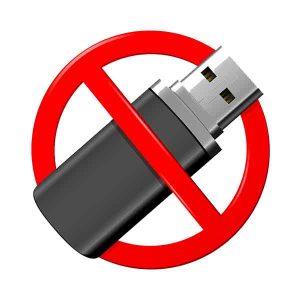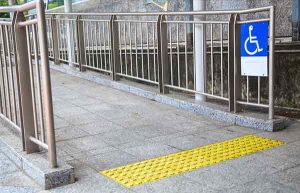November 2024
Inside This Issue
New LAB Standards:
The lead story this month is the announcement of new laboratory accreditation program standards to align with regulatory changes made by CMS. The new standards, which take effect January 1, 2025, are currently posted to the Joint Commission’s prepublication section of their website. Preparation time for implementation of these new standards is very short because as it is a CMS mandate, the usual 6-month lead time is not available.
For background information Perspectives includes a link to the Federal Register publication of the CMS final rule, which can be found at:
In addition, there is a link to the Code of Federal Regulations for the personnel qualifications, which can be found at:
https://www.ecfr.gov/current/title-42/chapter-IV/subchapter-G/part-493/subpart-M
Laboratory science and CLIA requirements are very exacting, and you will want to share these new standards and weblinks with your laboratory leadership to validate compliance. They may already be started as the changes are derived from the Federal register posting which was almost a year ago.
There is one new Joint Commission HR requirement, HR.01.04.01, EP 11, which details training requirements. There are two new LD elements of performance, one of which requires that an offsite laboratory director make a documented visit to the lab at least every 6 months, with at least 4 months between the two annual visits required. Smaller organizations that have an offsite lab director may need to set up a system to schedule and document these visits. The second LD element of performance establishes a responsibility for the provider performed microscopy director to evaluate competency of all testing personnel twice in their first year and annually thereafter. We noted that TJC did not publish any exemption from the competency requirements for physicians who perform microscopy.

There are then 12 new or revised elements in the Quality System Assessment for nonwaived testing chapter that detail specific quality control processes in the laboratory. One of these requirements is a revised QSA.12.01.01, EP 8 which will require a continuous monitoring system for storage temperatures and an alert system (alarm) when storage temperatures for reagents and specimens is not within required parameters. Currently monitoring is required as well as an alarm, but the concept of a continuous monitoring system is new.
While exploring resources to help understand these new laboratory requirements we did come across a CMS competency publication that may be helpful, which can be found at:
https://www.cms.gov/regulations-and-guidance/legislation/clia/downloads/clia_compbrochure_508.pdf
The CDC has also prepared a Provider Performed Microscopy booklet explaining the requirements for such analysis. This can be found at:
https://www.cdc.gov/lab-quality/docs/PMP_Booklet_7252019.pdf
 USB Storage Devices:
USB Storage Devices:
Perspectives has an announcement that TJC surveyors will no longer accept USB storage devices for document review. Due to the risk of malware that might be provided to TJC or the risk that after use the surveyor may have unknowingly transferred malware back to the organization, such devices will no longer be accepted. If you do want to provide your surveyors with electronic documentation, this can still be done, but organizations will also have to provide a computer to allow the surveyor to view and read the documents.
Blood:
This month’s Consistent Interpretation column discusses PC.02.01.01, EP 15 which requires blood transfusions to be administered in accordance with state law and approved medical staff policies and procedures. This EP had an almost 12% noncompliance rate last year.
The column also discussed related requirements for the medical staff to evaluate blood usage, the hospital to collect PI data even though compliance on these requirements was 100%. The guidance for PC.02.01, EP 15 states that TJC does not require a rate of infusion on blood or blood product orders. They indicate that this will only be scored if hospital policy requires a rate, and that rate is missing from the order. This was interesting to us, because we have seen many organizations scored deficient for failure to include a rate of infusion for blood orders.
We suggest keeping this column on file in the event that your organization is scored for what used to be a fairly common RFI.

 High Rise Hospitals:
High Rise Hospitals:
The lead article in this month’s issue of EC News is potentially a very important issue for some readers. Hospitals that are considered high rise, which means greater than 75 feet above the lowest level of fire department access must be fully sprinklered by July 5, 2028. This was announced when CMS adopted the 2012 version of the life safety code, but there are only 3½ years remaining before that deadline arrives. EC News also reminds us that as this deadline is national, there may be increased demand for the same service placed against the same limited pool of vendors, so don’t wait until the last minute to complete any required work.
Physical Environment Myths:
 EC News has an interesting article on physical environment myth busting. The first myth they discuss is the myth that TJC has a requirement prohibiting under-sink storage. While it is true that TJC does not have a standard prohibiting under-sink storage, there is an FAQ posted in the EC chapter requiring a risk assessment on the appropriateness of such storage if you plan to do it. The risk assessment would be used to evaluate the risk to products that might be stored under the sink in the event of a plumbing leak. In addition, the CDC does not support under-sink storage of medical or surgical supplies. So, you probably do not want to remove the screws so many organizations have placed in under sink cabinet doors. While storage of an under-sink garbage can or cleaning supplies might be acceptable, there remains the risk that someone will also place less appropriate supply products down there.
EC News has an interesting article on physical environment myth busting. The first myth they discuss is the myth that TJC has a requirement prohibiting under-sink storage. While it is true that TJC does not have a standard prohibiting under-sink storage, there is an FAQ posted in the EC chapter requiring a risk assessment on the appropriateness of such storage if you plan to do it. The risk assessment would be used to evaluate the risk to products that might be stored under the sink in the event of a plumbing leak. In addition, the CDC does not support under-sink storage of medical or surgical supplies. So, you probably do not want to remove the screws so many organizations have placed in under sink cabinet doors. While storage of an under-sink garbage can or cleaning supplies might be acceptable, there remains the risk that someone will also place less appropriate supply products down there.
Myth 2 is that medical equipment must have stickered biomed labels. While technically there is no mandate for labels, there is an expectation that staff should be able to determine if medical equipment is safe to use. Having a sticker that provides a specific date for reinspection or preventative maintenance tells the staff that the equipment has been inspected, and in accordance with your medical equipment plan should still be safe to use if the date has not yet been reached. While you could forgo expiration stickers, their absence might make it more difficult for staff to explain how they verify a piece of equipment is safe to use.
There are also myths related to eyewash bottles, time limited waivers and audible fire alarms during night hours that readers may find interesting, but not likely to be surprising.
Building Design and Signage for Vision Impairment:
The November issue of EC News also has a thought-provoking article and photographs relative to vision accessibility and design features that make it easier for safety and way finding. Many seniors are annoyed by the romantic, but dimly lit restaurant with menus printed using light brown ink on tan or parchment like paper, but those with more significant vision impairments may find navigation through a hospital more distressing and possibly dangerous.
 The EC News has some great photos showing tactile transition materials on walking paths and how to use contrasting colors to highlight building features such as stairs and light switches. The article also discusses the value of adequate lighting, but with the need to avoid glare during peak daytime hours. The authors also discuss standardization of where you place braille signs, as some facilities have them randomly placed left, right, or different heights, and patients with a vision disability have to search with their hands to find the signage.
The EC News has some great photos showing tactile transition materials on walking paths and how to use contrasting colors to highlight building features such as stairs and light switches. The article also discusses the value of adequate lighting, but with the need to avoid glare during peak daytime hours. The authors also discuss standardization of where you place braille signs, as some facilities have them randomly placed left, right, or different heights, and patients with a vision disability have to search with their hands to find the signage.
If you have any new construction or renovation planned this will be a valuable consideration in your planning.
ILSM Q+A:
Lastly, this month’s issue of EC News has a Q+A column that describes the requirements of LS.01.02.01, or the interim life safety measures standard. This remains a difficult, and at times confusing, standard for many organizations that has a fairly high noncompliance rate. We believe 5 difficult issues arise relative to this standard.
 What are ILSM?
What are ILSM?- When do we have to implement ILSM?
- What measures should we implement for ILSM?
- What should be incorporate in policy for ILSM?
- What documentation will be needed to show our surveyors?
The first “what” question is somewhat easy in that Interim life safety measures are additional safeguards or activities you plan to implement should you identify any defects in the life safety code requirements. The “when” do we implement question is much less well understood because many organizations associate ILSM only with large construction projects. However, an ILSM evaluation isn’t just for big construction projects, it is also required for minor renovations, self-identified life safety code defects awaiting repairs and as many organizations learn during survey, it is also expected should the surveyor identify any life safety code defects you were not previously aware of, that will be corrected during your ESC period.
The “what” measures questions in 3 and 4 above, what should we implement as a result of the life safety code defect that will help to keep patients and staff safe, should be the easiest question because Joint Commission provides you with 11 examples of additional safety measures you could potentially implement in elements of performance 3-14. There is also one more wild card element of performance, EP 15 that suggests implementing any additional safeguard you can think of that might be appropriate to the nature of the defect. The key here is to include all these potential measures in your policy and decide which of the measures is best going to enhance safety during the period of construction, renovation or until the self-identified life safety code defect can be corrected, and to actually implement and document what you plan to do on your ILSM evaluation form.
The last “what” question 5 above, needs to include your evaluation decision and evidence that you actually implemented the plan. For example, if you decided to implement the measure described in EP 9 to “enforce practices for storage, housekeeping, and debris removal that reduces the buildings flammable and combustible fire load to the lowest feasible level,” you would want to document an inspection process. In addition, the surveyor is going to look at the area, should construction or renovation still be taking place, and you will want that area to be free of dust, debris and combustible garbage, demonstrating your plan was actually implemented and effective.
Lastly, we sometimes see organizations that think through the ILSM evaluation and decide that nothing needs to be done because the project is so small or will be corrected so quickly that we are not going to create a significant life safety code defect and decide to not document an ILSM evaluation. There are just so many flaws in this logic, and under Murphy’s law, that’s the day your survey team will arrive.
So, take a look at the EC News Q+A article in conjunction with the advice above, the article’s link to a standards FAQ, the published standard and its 15 elements of performance, your policy and your evidence binder showing that you are actually conducting ILSM evaluations and implementing ILSM measures to verify compliance.
 Hospital Fires:
Hospital Fires:
The new Joint Commission publication, EM Leader published its October issue after we had gone to print with our October Newsletter. It contains an interesting case study from the Brockton Hospital in Massachusetts which had a very significant fire, well beyond the scope of what hospitals might usually plan for. While we often strategize for “defend in place” and “lateral evacuation,” their fire, which started in the main electrical vault room resulted in a total loss of power, shutting down elevators, lighting, computers, and phones, requiring a total evacuation of patients. Fortunately, all 162 patients were safely evacuated and renovations after the fire took a year and a half. Their story will be useful reading for your EM team as the scope of their emergency is far beyond the average fire scenario that might be planned for.
Emergency Communications Plan:
 The October issue of EM Leader also has a nice summary article explaining what should be in your emergency communication plan. In a narrative format they describe what should be in the plan and it provides a good source for self-evaluating your own emergency communications plan. Two links are provided, one to a JCR template tool for evaluating the EM communications plan and a second to a NYS EM communications plan template that can be modified with your own specific details to build an emergency communications plan.
The October issue of EM Leader also has a nice summary article explaining what should be in your emergency communication plan. In a narrative format they describe what should be in the plan and it provides a good source for self-evaluating your own emergency communications plan. Two links are provided, one to a JCR template tool for evaluating the EM communications plan and a second to a NYS EM communications plan template that can be modified with your own specific details to build an emergency communications plan.
After Action Reports and EM Plan Evaluations:
The last two articles in the October EM Leader discuss what should be in each after action report (AAR) and what should be done to fulfill the requirement to perform the every-two-year evaluation of the EM program. As the AARs will be used to help evaluate the overall EM program, let’s start there. TJC suggests that each AAR should identify weaknesses observed, compare results with prior exercises/incidents, identify improvement opportunities and specific improvement actions to be taken and how those actions will be monitored. Remember the EM standards are designed in a classic performance improvement approach that should be evaluated in more detail than just saying “everything worked great.”
 Standard EM.10.01.01, then calls for an every-two-year formal evaluation of the overall plan by senior leadership and the EM team to include the after-action reports and suggested improvements to determine if changes are actually being identified and made. TJC advises that those exercises be evaluated in the four phases of response, including mitigation, preparedness, response, and recovery.
Standard EM.10.01.01, then calls for an every-two-year formal evaluation of the overall plan by senior leadership and the EM team to include the after-action reports and suggested improvements to determine if changes are actually being identified and made. TJC advises that those exercises be evaluated in the four phases of response, including mitigation, preparedness, response, and recovery.
We would suggest that these two articles be used to help analyze your current AAR process and your next overall evaluation of the EM plan. Take a look at what you have changed over the last two years to determine if you are actually strengthening your EM plan over time.
 ACHC: Proficiency Testing:
ACHC: Proficiency Testing:
The ACHC blog this month has a useful blog article on the subject of laboratory proficiency testing, related to CLIA modifications published back in 2022. The ACHC blog can be accessed at:
https://www.achc.org/wp-content/uploads/2024/09/CMS-Changes-to-Proficiency-Testing_Sept-2024.pdf
More importantly ACHC has compiled a nice multipage summary of the enhanced accuracy requirements for proficiency testing that may be useful to your laboratory staff as a reminder. The link to their summary is contained in the blog.
CIHQ: Respiratory Therapy Orders:
 The October issue of the CIHQ Journal, available for free on their website at https://cihq.org, has a helpful article on respiratory therapy orders. It’s not often we see respiratory therapy RFIs, but we do see them from accreditors at times. CIHQ points out the common problem with physician orders for oxygen not matching the flow rate currently being administered. They suggest instead of prescribing a specific flow rate, to instead prescribe oxygen to a specific SpO2 goal so that the RT or nurse can adjust the flow rate to the patients’ needs. The authors also point out the occasional problem with ventilator settings, which are sometimes adjusted, but then become inconsistent with the physician’s orders.
The October issue of the CIHQ Journal, available for free on their website at https://cihq.org, has a helpful article on respiratory therapy orders. It’s not often we see respiratory therapy RFIs, but we do see them from accreditors at times. CIHQ points out the common problem with physician orders for oxygen not matching the flow rate currently being administered. They suggest instead of prescribing a specific flow rate, to instead prescribe oxygen to a specific SpO2 goal so that the RT or nurse can adjust the flow rate to the patients’ needs. The authors also point out the occasional problem with ventilator settings, which are sometimes adjusted, but then become inconsistent with the physician’s orders.
They suggest creating an algorithmic order set that details instructions for interventions, based on national clinical practice guidelines and creates a protocol to adjust settings to meet patient needs. The third piece of advice is to avoid orders that state “respiratory to consult and treat.” As respiratory therapists may not treat without a provider order, they suggest “respiratory to consult.” The RT would then make recommendations for treatment that could then be ordered by the provider. Regardless of which accreditor you use, these are good suggestions for somewhat infrequent, but problematic situations.
 Respiratory Illness Reporting:
Respiratory Illness Reporting:
On October 22nd, CMS posted QSO 25-05 relative to new requirements for reporting respiratory illnesses. Hospitals will be expected to report respiratory illnesses including SARS/Covid, influenza, and RSV. In addition, hospitals will be expected to report bed census and capacity using the NHSN electronic reporting system. Although the memo was posted Oct 22nd, reporting was expected to start November 1, 2024.
You will want to read this CMS memo very carefully as they have created 2 options for reporting. The first is daily data summarized and reported once a week and the second is weekly totals of new admissions. The CMS memo provides a link to the CDC NHSN site that explains more details about these two reporting options. Psychiatric and rehabilitation hospitals, as well as distinct part units are going to be permitted to submit data once a year beginning in January 2025. The CMS memo also details a warning letter process for organizations that miss this new reporting requirement.
 DSCSA Deadline:
DSCSA Deadline:
Another pending deadline hospitals and the hospital pharmacies had been anticipating was the Drug Supply Chain Security Act, or DSCSA, which was to begin on November 27th. The FDA has recognized that continued work is needed in the entire industry to begin this process, thus dispensers with 26 or more employees are granted an extension until November 27th, 2025. The FDA has also granted what they call an exemption to smaller dispensers, defined as 25 or fewer full time pharmacy employees. We would call this an extension as they will still be required to comply with DSCSA but have until November 27th, 2026.
We suggest you review full text of the FDA’s waiver memo:
Consultant Corner
Dear Readers,
We have officially entered the Holiday Season! As
Thanksgiving approaches, we want to take a moment to
express our deepest gratitude for the dedication and
compassion you all have to make healthcare a better place.
To our team, our colleagues, clients, and readers: Thank
you for your tireless commitment to improving patient
care, maintaining compliance, and ensuring that your
organization meets the highest standards of regulatory
excellence. Your dedication is not just about meeting
regulations; it’s about making a real difference in the lives
of patients and their families.
In a field where every action contributes to safety and
healing, your hard work truly matters. We are grateful for
the expertise, resilience, and kindness you bring, and we’re
honored to work alongside such talented professionals.
We wish you a Thanksgiving filled with rest, joy, and the
warmth of knowing how much you are appreciated. Happy
Thanksgiving!

Thank You,
Jennifer Cowel, RN MHSA
JenCowel@PattonHC.com
Julia Finken, RN, BSN, MBA, CPHQ
julia.finken@hbsinc.com
Kurt Patton, MS RPh
Kurt@PattonHC.com
John Rosing, MHA
JohnRosing@PattonHC.com

 What are ILSM?
What are ILSM?